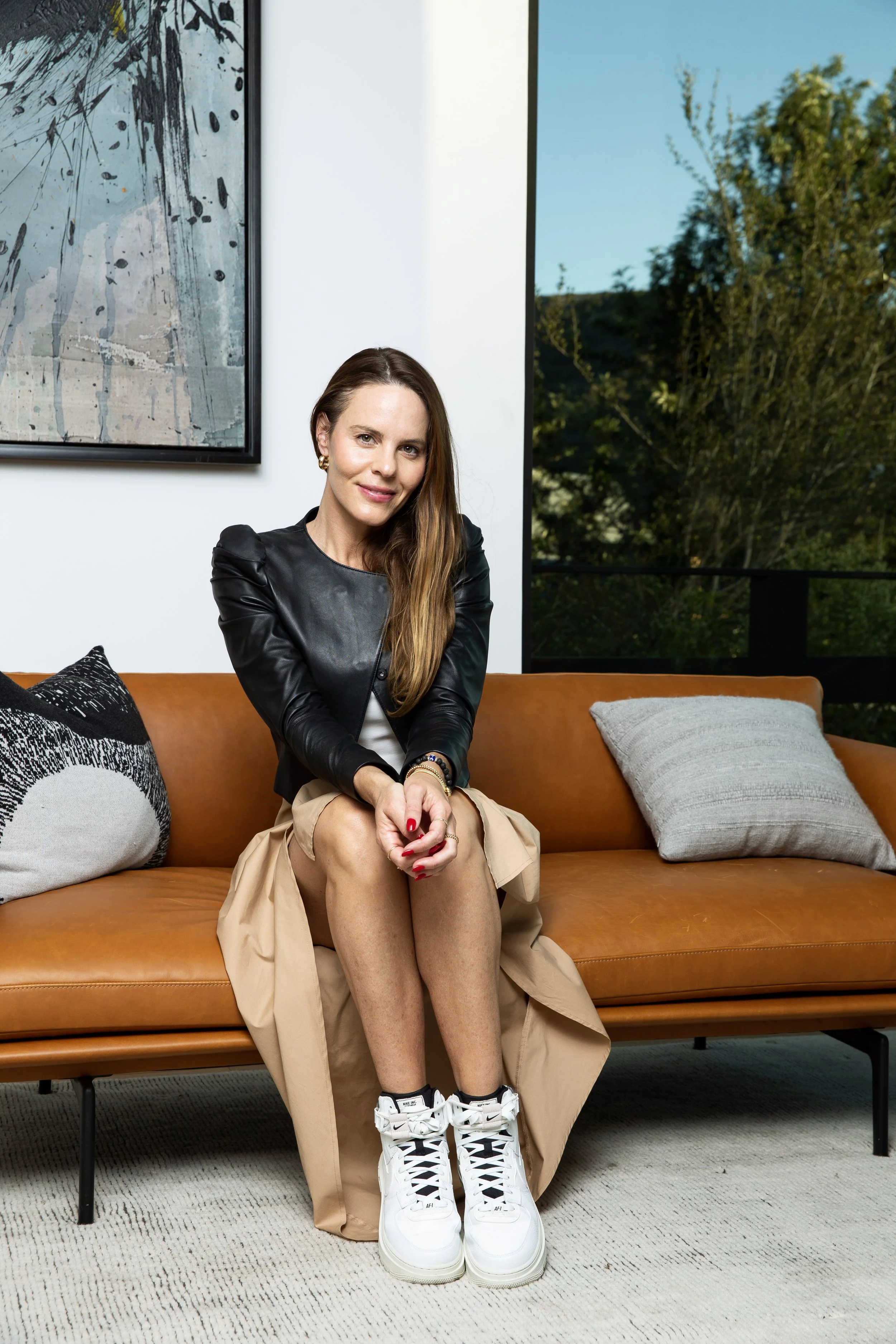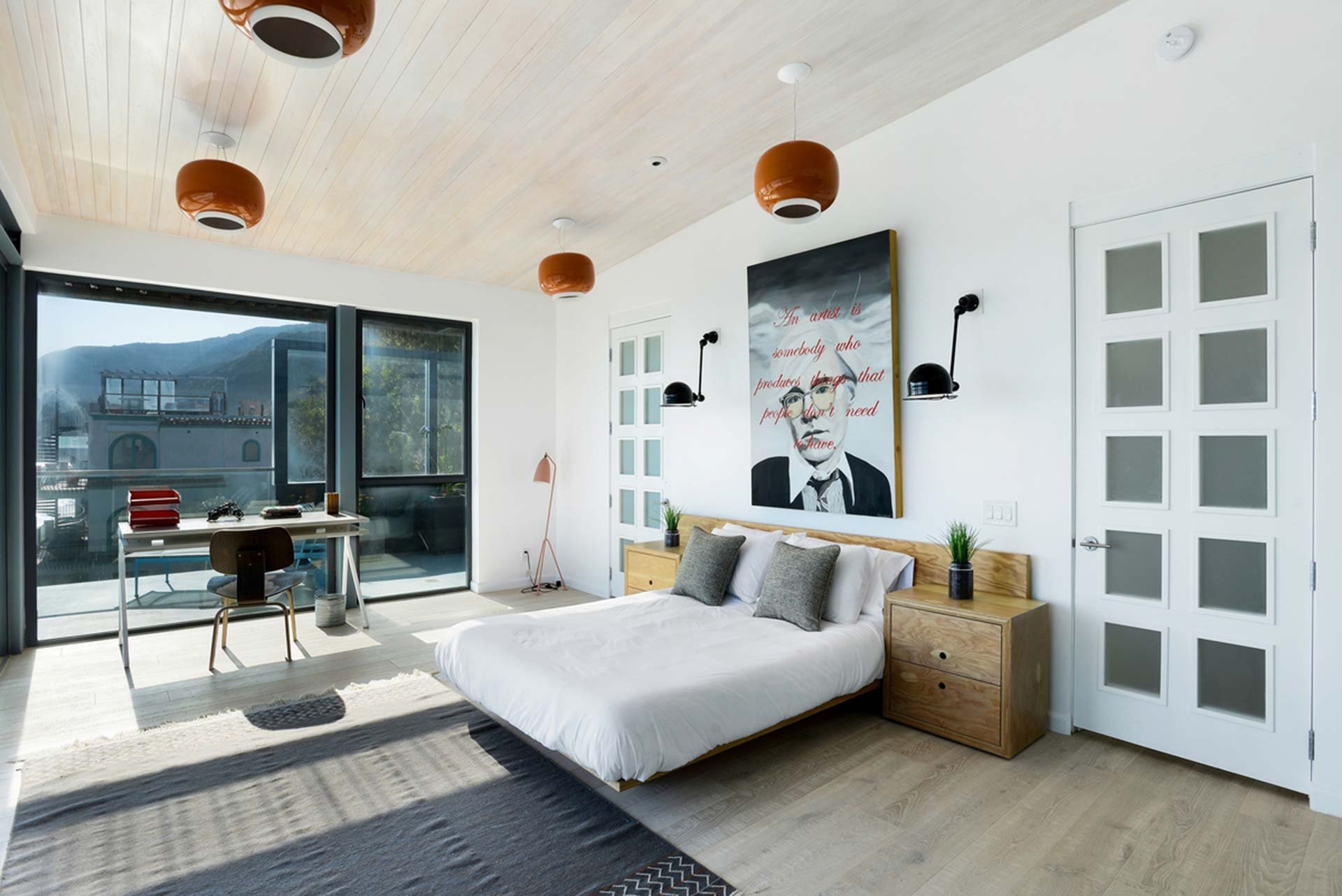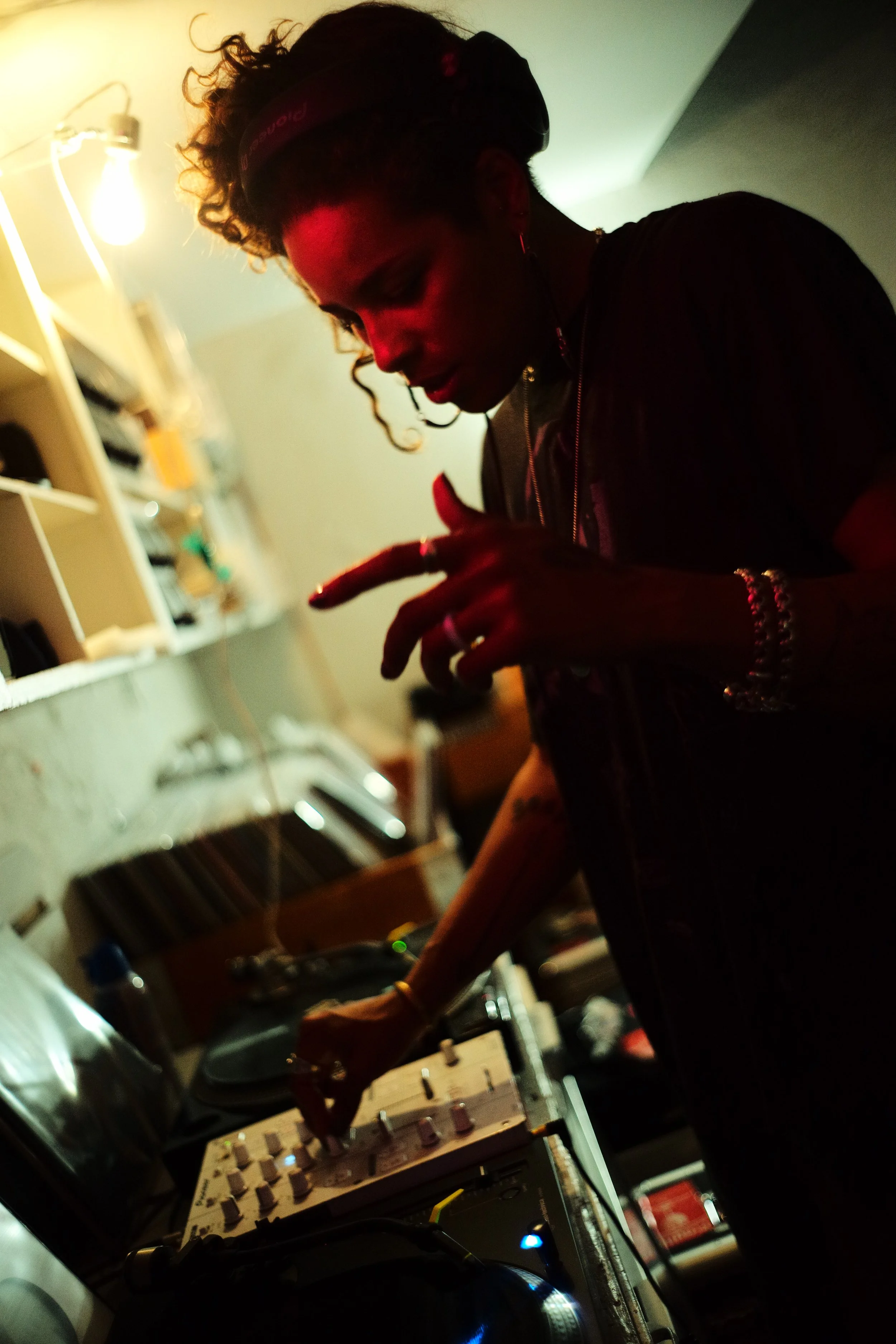IN DESIGN: KATHERINE CARTER
“Katherine Carter and I had a fortuitous encounter in the lovely neighborhood of Santa Monica, California. My first impression of Katherine was that of a kind, beautiful, generous old soul with tremendous empathy and compassion who routinely placed others' needs before her own.”
Since 2007 Katherine has headed the Katherine Carter Design firm which has been featured in Architectural Digest, People, Casa Vogue, Elle, and Dwell magazines. Her clients' spaces are on display in the Pacific Palisades, Palm Desert, Hancock Park, Hollywood Hills, Malibu, Venice, Brentwood, West Hollywood, Mount Olympus, Culver City, Los Angeles, and Manhattan Beach.
“A well-designed interior and exterior should embody exceptional design that is timeless, unique, charming, luxurious, functional, comfortable, and most importantly speaks the client’s language.” — Katherine Carter
TERRENCE SANDERS-SMITH - What’s the difference between an interior designer and interior decorator? On your website your site title mentions Architecture Studio. How does that division correlate with the firm?
KATHERINE CARTER - An interior designer plans and designs layouts, considering functionality and safety. They might change the structure of a space. An interior decorator focuses on aesthetics, selecting furniture, colors, and decorations within existing layouts.
An "Architecture Studio" often includes architects and interior designers who collaborate on both building exteriors and interiors. Architects design the overall structure, while interior designers specialize in interior spaces. Interior decorators enhance aesthetics, usually aligning with the architecture's vision.
TSS - When and why did you decide to become an interior designer?
KC - Back in 2006, I found myself living and working in the vibrant heart of Camden, London, under the umbrella of Viacom / MTV. My flat was conveniently situated across the street from the iconic Camden Market, a place that would become a sanctuary for me during lunch breaks and weekends. The energy of the market, coupled with its eclectic offerings, always intrigued and captivated me.
It was the antique, furniture, and the rug sections of the market that truly sparked my inspiration. I would wander through these areas, utterly mesmerized by the unique designs and the stories they seemed to tell. The creativity that went into crafting these pieces left me awestruck. Each item seemed to have its own history and character, and I found myself drawn to the intricate details and the way they blended various styles and eras.
Time went on, and eventually, I decided to make the move back to the United States, with Los Angeles being my chosen destination. Despite the change in location, I continued my career in Producing, yet my passion for design and creativity never waned. In my quest to find places reminiscent of the Camden Market experience, I stumbled upon the Rose Bowl flea market. This open-air treasure trove felt like a callback to the days spent exploring Camden Market, igniting that same sense of wonder and fascination.
It was during this period I stumbled upon a new hobby that would change the course of my life. Drawing inspiration from my experiences in London and the Rose Bowl flea market, I began restoring old furniture and transforming seemingly mundane objects into functional pieces of art. The thrill of taking something worn and forgotten and breathing new life into it became my escape, my passion project.
To my surprise, my creations started gaining attention, and before I knew it, I had sold every single piece I had worked on. This eye-opening experience taught me a profound lesson: I could channel my passion into something productive and sustainable. I realized that I could not only derive immense satisfaction from my work but also earn a living doing what I loved most.
This revelation led me down a new path. Fueled by the realization that I could turn my passion into a career, I decided to venture into the world of interior design. The echoes of my time spent in Camden Market, the Rose Bowl flea market, and my furniture restoration endeavors resonated deeply within me as I transitioned into this new chapter. The decision to become an interior designer was a leap of faith, but one that I embraced wholeheartedly.
Looking back, I can confidently say that the experiences and inspirations from my time in London, my fascination with markets, and my journey through restoring furniture all converged to shape my current reality. As an interior designer, I have found my calling, my true passion. The lessons learned from my past have given me the courage to pursue a career that not only brings me joy but also allows me to create spaces that tell stories, just like the pieces I fell in love with back in Camden Market. And as I stand here today, I haven't looked back once – because I know I'm exactly where I'm meant to be. My journey as an interior designer was further enriched by my travels around the world, where I had the privilege of witnessing a kaleidoscope of diverse designs and materials that continually fueled my inspiration and broadened my creative horizons.
TSS - You’ve owned your own design firm for 15 years, but have you ever worked for another firm or interior designer and or decorator? If yes, where, for who and what did you learn and if no, why not?
KC - I was hired as Homepolish’s lead designer when they first opened their offices in New York. Working as an independent contractor gave me the freedom to take on my own clients and decide if the ones they sent me were a good fit. This opportunity really launched my career as I started getting published in articles by Architectural Digest, Elle Decor, Vogue Living to mention a few. It was an exhilarating time that allowed me to establish my style and make a name for myself in the industry.
TSS - How do you find clients and how do they find you?
KC - I am mainly referral based at this stage in my career with people finding me through social media and published articles.
TSS - What year, for who and where was your first design job?
KC - In 2009, I had the privilege of working with my first client, a wonderful couple residing in Brentwood, CA. To this day, they remain my most valued client and the project we embarked upon is undoubtedly my favorite. The remarkable aspect of this collaboration was that they granted me absolute creative freedom, allowing my ideas to flow unrestricted. Their implicit trust in me was incredibly heartwarming and has had a lasting impact on my approach to my work.
TSS - I’ve noticed all your clients' spaces are in California. Do you consider yourself a California interior designer? Is there a certain design aesthetic when designing a California space? Please describe your process and practice and how you find inspiration for a space you have been commissioned to interior design.
KC - First and foremost, I truly appreciate the uniqueness that each client and project brings; no two are ever alike. It's fascinating to see the diverse range of needs, preferences, and budgets that people have. Personally, I find the standard cookie-cutter approach of the boho modern California style to be quite uninspiring. Luckily, I'm fortunate to work with some amazing clients who are open to embracing more daring and distinctive design options, which aligns perfectly with my preferences as a designer.
TSS - Regarding your space selections, do you sketch the objects within the constructs of the space or do you walk around and have an immediate vision for color schemes, type of furniture, artwork, and placement?
KC - As an interior designer, my process begins with an in-person or virtual walkthrough of the space, catering to clients' location and preferences. This step provides me insight into the layout and ambiance. For remote clients, I employ virtual tools like video calls and photos. Remodel projects involve offering 3D renderings and floor plans for visualization. My approach is adaptable, accommodating clients who prefer digital interaction or in-person engagement. My ultimate goal is to create a customized and successful design outcome.
TSS - I have always been interested in the conversation between art, architecture, and interior design. The space is a blank canvas, and you are the painter. What is the connective tissue between all three regarding balance, unity, rhythm, emphasis, contrast, scale, and proportion?
KC - In the realms of art, architecture, and interior design, the principles of balance, unity, rhythm, emphasis, contrast, scale, and proportion serve as the connective tissue that ties these disciplines together, creating harmonious and impactful spaces. Each principle contributes to the overall aesthetic and functionality of a space, ensuring that it evokes the desired emotional response and serves its intended purpose.
The threads that weave through art, architecture, and interior design, shaping the way spaces are conceived and experienced. By applying these principles thoughtfully, designers and creators can transform blank canvases into captivating and well-balanced environments that engage the senses, evoke emotions, and fulfill practical needs.
TSS - Do you incorporate the principles of feng shui into your interior design constructs? If yes, how, and why? And if no, why not.
KC - If a client is interested in integrating Feng Shui into their interior design, I'm definitely on board. I personally place a lot of importance on the orientation of the bed, and I usually bring up this topic right away. I even use the compass on my iPhone to show them exactly where their bed should be placed for optimal sleep and overall well-being, according to Feng Shui principles.
When I start working with a client who's open to this approach, I begin by having a thorough discussion to understand their preferences and concerns about their space. During our conversation, I introduce the concept of Feng Shui and explain how it can enhance the energy and comfort of their living areas.
When it comes to bed placement, I suggest the "command position," where the bed is positioned in a way that allows a clear view of the entrance but isn't directly aligned with it. This placement is believed to create a sense of security and control. To determine the best placement, I sometimes use tools like a compass.
Feng Shui emphasizes the flow of energy, or "qi," throughout a space. I make sure to avoid clutter and arrange furniture in a way that promotes easy movement and energy circulation. This might involve adjusting furniture placement to ensure that energy can flow freely without any obstacles or sharp angles.
Another aspect of Feng Shui is balancing the five key elements: wood, fire, earth, metal, and water. Each element is associated with specific colors, shapes, and materials. I incorporate these elements into the design to create a balanced and harmonious environment.
Colors and lighting also play a significant role in Feng Shui. Different colors are linked to various energies and emotions. I select colors that match the intended purpose of the room and create the desired atmosphere. Lighting affects energy flow as well, so I ensure a balance between natural and artificial light sources.
Throughout the design process, I make sure to keep the lines of communication open with my clients. I explain the principles I'm incorporating and how they contribute to the overall well-being of the space.
It's important to remember that while Feng Shui can be meaningful to some, others might not connect with it on the same level. I always respect my clients' perspectives and aim to create a design that reflects both the principles of Feng Shui and their personal preferences.
TSS - When creating a living and or working environment for the client, what, if anything, does the client contribute to the design aspect?
KC - I often find that clients bring their budgets and their unique preferences into the mix, which shapes the overall vibe of the project. And, of course, there's the occasional headache that pops up - only kidding. Working with clients is usually a mix of enjoyable collaboration and the occasional challenge, but it's all part of the process. It's important to communicate well and keep a positive outlook to navigate through any bumps in the road and deliver a successful outcome.
I work with a diverse range of high-profile clients, both in the US and abroad, ensuring their privacy by not photographing their spaces. While my website showcases only a fraction of my design projects, I'm proud to capture the essence of California interior design, California interior design boasts a distinctive blend of styles from the boho modern to the timeless mid-century modern. Occasionally, I encounter clients in LA who are eager to explore beyond these boundaries, and I find their willingness to step outside the box refreshing.
Lately, there's a noticeable trend towards embracing earthy, minimalist approaches not only in lifestyle but also in the home environment. The principle of "less is more" has gained traction, and I'm keen on crafting spaces that align with this ethos.
To stay relevant, I constantly keep up with evolving design trends, materials, and technologies. Sustainability is also a key consideration, and I integrate eco-friendly materials and practices into my designs whenever possible.
Collaboration with my clients is paramount. I involve them in the design process, fostering open discussions to create spaces that truly reflect their needs and personalities.
Building a strong network within the interior design community and nurturing connections with potential clients is crucial for expanding my opportunities and taking on unique projects.
By respecting my clients' privacy and embracing changing preferences for simplicity and functionality, I'm confident in my ability to provide exceptional design solutions that cater to the unique desires of each client.
TSS - What in your opinion defines an important and relevant interior designer?
KC - Ultimately, being a standout interior designer is a harmonious blend of artistry, technical expertise, and the ability to connect deeply with clients and their spaces. It's about crafting environments that not only look incredible but also enrich the lives of those who experience them.
TSS - Thank you Katherine for taking the time to introduce yourself to our readership.
KC - My pleasure.
CONTAT: KATHERINE CARTER DESIGN http://katherinecarter.com/












